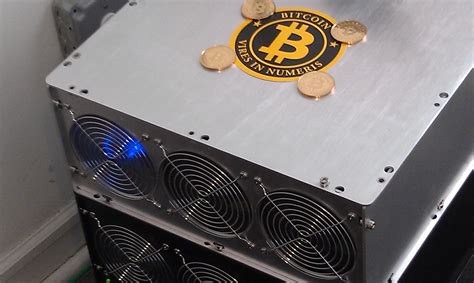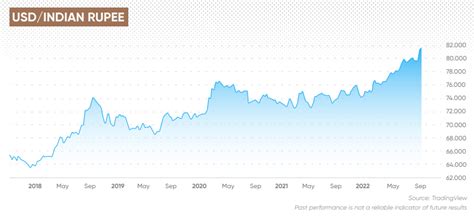Introduction: The Blockchain Revolution
In the realm of digital finance, Bitcoin has emerged as a revolutionary force, challenging traditional monetary systems and reshaping the way we think about money. Central to the Bitcoin ecosystem is the concept of mining, a decentralized process that secures the network and verifies transactions.

What is Bitcoin Mining?
Bitcoin mining is the process of creating new Bitcoins by solving complex mathematical puzzles using specialized computers. Miners compete to be the first to solve these puzzles, earning rewards in the form of newly minted Bitcoins and transaction fees.
The Importance of Mining
Mining plays a crucial role in the Bitcoin ecosystem by:
- Securing the network: Miners verify transactions, ensuring their validity and preventing fraud.
- Creating new Bitcoins: Mining is the only way to create new Bitcoins, controlling the supply and maintaining scarcity.
- Decentralizing the network: Mining distributes the power of the network among thousands of independent miners, making it resistant to censorship and manipulation.
How Does Mining Work?
The mining process involves:
- Solving Mathematical Puzzles: Miners use specialized hardware called ASICs (Application-Specific Integrated Circuits) to solve complex mathematical problems called “hashes.”
- Finding the Correct Hash: The first miner to find a hash that meets specific criteria earns the right to add a new block of transactions to the blockchain.
- Getting Rewarded: The miner who finds the correct hash receives a block reward, which is a certain number of newly minted Bitcoins plus transaction fees.
The Evolution of Mining
Over time, Bitcoin mining has evolved significantly:
Early Days (2009-2013): Mining was done using personal computers and graphics cards.
ASIC Era (2013-2016): Specialized ASICs were developed, increasing mining efficiency exponentially.
Cloud Mining (2016-2018): Mining pools emerged, allowing individuals to rent hashing power from large-scale mining operations.
Institutional Mining (2018-Present): Large companies and investment firms have entered the mining industry, bringing significant resources and infrastructure.
The Rise of Professional Mining
In recent years, Bitcoin mining has become a highly specialized industry dominated by professional operations. Large-scale mining farms with thousands of ASICs have been established in countries with low energy costs, such as China, the United States, and Kazakhstan.
The Environmental Impact of Mining
Bitcoin mining consumes a significant amount of electricity, raising concerns about its environmental impact. However, miners are increasingly exploring renewable energy sources, such as solar and wind power, to reduce their carbon footprint.
The Future of Mining
As Bitcoin’s adoption and price increase, mining is likely to continue evolving. Some potential trends include:
- Increased Hashrate: As more miners join the network, the difficulty of mining will increase, requiring more powerful and efficient hardware.
- Green Mining: Miners will continue to adopt sustainable practices to reduce their environmental impact.
- Specialized Hardware: The development of new ASICs will further optimize mining efficiency and profitability.
How to Get Started with Mining
Getting started with Bitcoin mining can be complex and requires a significant investment in hardware. Here are some considerations:
- Choose a Mining Pool: Join a mining pool to increase your chances of finding a block and earning rewards.
- Buy ASIC Hardware: Purchase specialized ASIC miners to achieve maximum efficiency.
- Set Up Your Mining Rig: Connect your ASICs to a power source and mining software.
- Monitor Your Operations: Regularly check your mining progress and adjust settings as needed.
Common Mistakes to Avoid
- Investing without Research: Thoroughly research the mining industry before investing.
- Buying Cheap Hardware: Avoid purchasing cheap or outdated ASICs that may not be profitable.
- Mining Alone: Join a mining pool to increase your probability of rewards.
- Ignoring Electricity Costs: Factor in the cost of electricity when calculating your mining profitability.
- Overclocking Your ASICs: Overclocking can reduce the lifespan of your hardware.
Reviews
Review 1:
“I’ve been mining Bitcoin for the past two years, and it has been an exciting and rewarding experience. I’ve earned a good return on my investment and believe that Bitcoin has a bright future.” – Sarah, Bitcoin Miner
Review 2:
“Mining Bitcoin requires a significant investment, but it can be a lucrative venture if done correctly. Research and due diligence are key to success in this industry.” – John, Mining Expert
Review 3:
“The environmental impact of Bitcoin mining is a valid concern, but miners are actively working to reduce their carbon footprint through renewable energy sources. It’s important to consider the long-term benefits of Bitcoin as a decentralized and censorship-resistant monetary system.” – Mary, Cryptocurrency Advocate
Review 4:
“Bitcoin mining is a highly competitive industry, and it’s essential to choose a reliable mining pool and invest in efficient hardware. By following best practices and staying informed about industry trends, you can maximize your chances of profitability.” – Mike, Mining Entrepreneur
Conclusion: Mining Bitcoin in 2025
As Bitcoin continues to gain mainstream adoption, mining is poised to play an even more critical role in securing the network and creating new Bitcoins. By understanding the fundamentals of mining, investors and enthusiasts can navigate the complexities of this evolving industry and potentially reap the rewards of Bitcoin’s digital gold rush.
Tables
Table 1: Bitcoin Mining Statistics (2022)
| Metric | Value |
|---|---|
| Hashrate | 266 EH/s |
| Number of Active Miners | 1.2 million |
| Total Bitcoins Mined | 19.2 million |
Table 2: Estimated Bitcoin Mining Energy Consumption
| Method | Annual Energy Consumption |
|---|---|
| Cambridge University | 121 TWh |
| Digiconomist | 98.3 TWh |
| University of California, Berkeley | 47.8 TWh |
Table 3: Top Bitcoin Mining Hardware (2023)
| Manufacturer | Model | Hashrate (TH/s) |
|---|---|---|
| Bitmain | Antminer S19 Pro | 110 |
| MicroBT | Whatsminer M30S++ | 112 |
| Canaan Creative | Avalon A1246 | 90 |
Table 4: Potential Applications of Bitcoin Mining Heat
| Application | Benefits |
|---|---|
| Greenhouse Heating | Warm crops during winter months |
| Industrial Drying | Dry materials using waste heat |
| District Heating | Heat homes and businesses |



